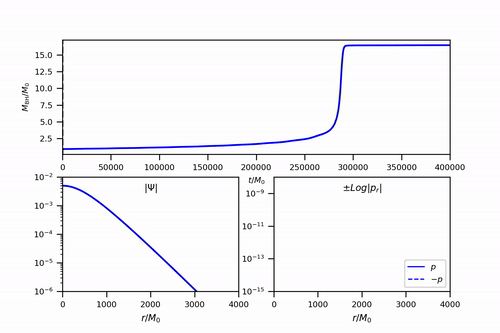
Parasitic black holes: the swallowing of a fuzzy dark matter soliton.Time evolution of BH mass (top panel), scalar field (bottom left), and energy flux (bottom right). Initial boson star mass is 15 times heavier than initial black hole mass. Initial boson star size is 600 times larger than black hole radius.
Reference: V. Cardoso et al, arXiv:2207.09469v1
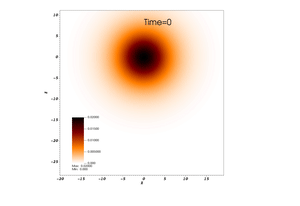

Piercing of boson stars by a black hole. Left Panel: a black hole of unit mass colliding with a boson star of mass 0.53. The collision happens at 50% the speed of light. Right panel: a black hole of mass 0.1 colliding with a boson star of mass 0.53. The collision happens at 50% the speed of light.
Reference: Vitor Cardoso et al, arXiv:2206.00021

High energy black hole collisions. The collision of two boosted black holes (v=0.75c in the center of mass frame), with a finite impact parameter in asymptotically flat spacetime. About 24% of the center of mass frame can be released as radiation, for this collision. The final hole is nearly maximally spinning. The intensity of the color refers to the amplitude of the gravitational waves as measured by Ψ4.
Reference: Sperhake et al, Phys.Rev.Lett.103:131102(2009); arXiv:0907.1252 [gr-qc]
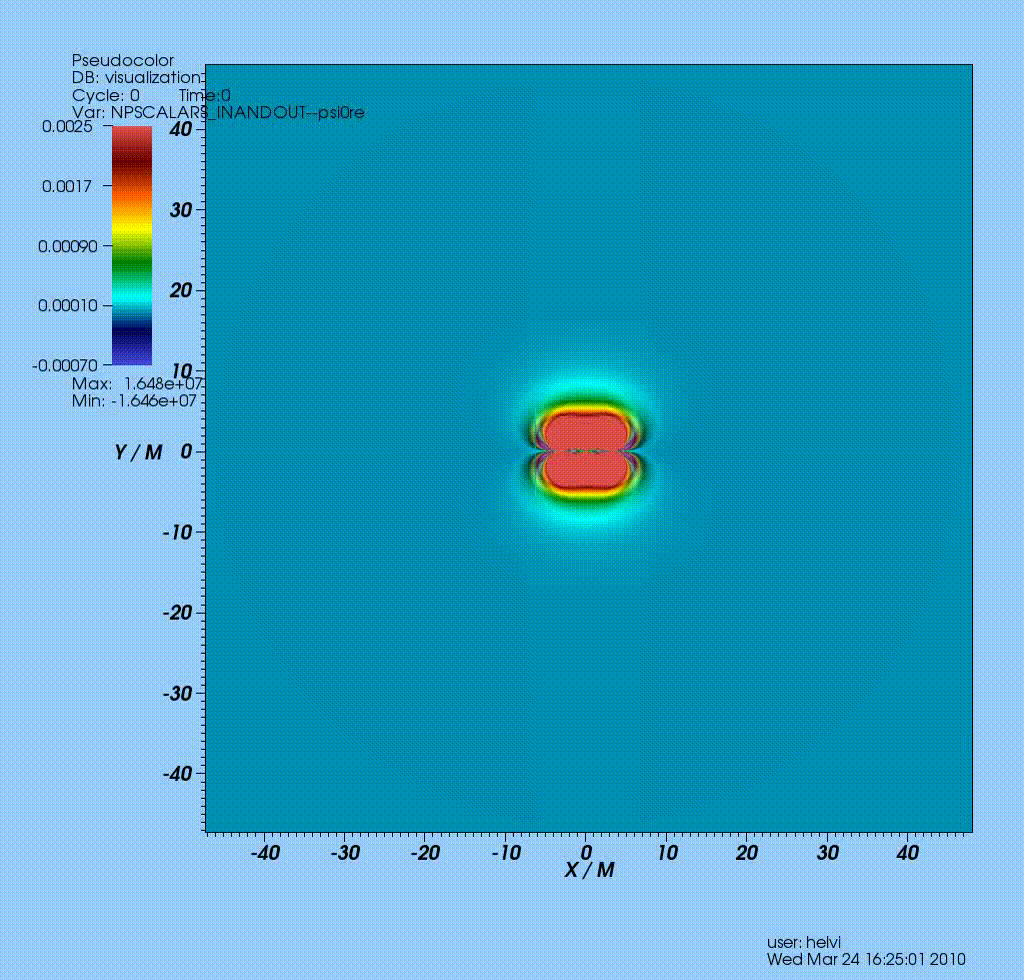
Black holes in a box. The inspiral and coalescence of two black holes, with total mass M, inside a confining box of radius 48 M. Out- and in-going waves are measured respectively by Ψ4 and Ψ0.
Reference: Witek et al, Phys.Rev.D82:104037 (2010) ; e-Print: arXiv:1004.4633

Black hole bombs I. Scalar fields. The time evolution of a massive scalar field around a highly spinning black holes. The scalar field is initially in a bound state, and continues to be for thousands of orbital periods. Colors depict field intensity.
Reference: Witek et al, Phys.Rev.D87:043513 (2013); e-Print: arXiv:1212.0551
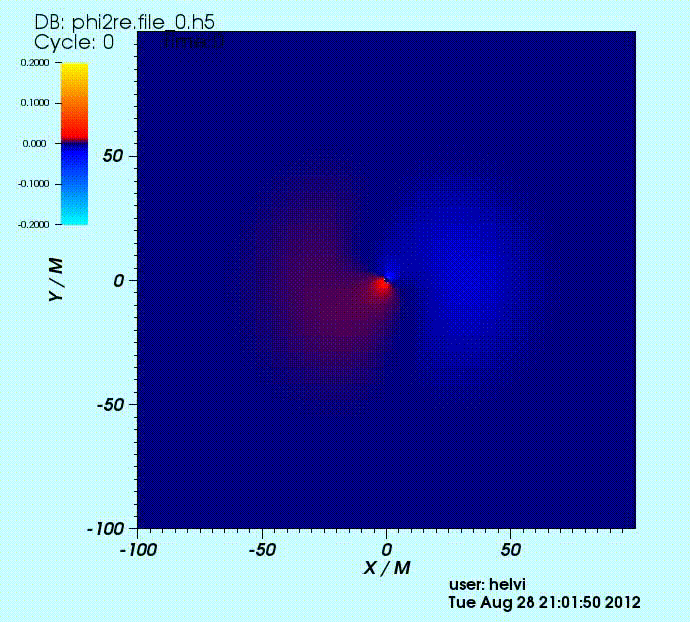
Black hole bombs II. Vector fields. The time evolution of a massive vector field around a highly spinning black holes. The vector field is initially a generic gaussian. Colors depict field intensity.
Reference: Witek et al, Phys.Rev.D82:104037 (2013); e-Print: arXiv:1212.0551
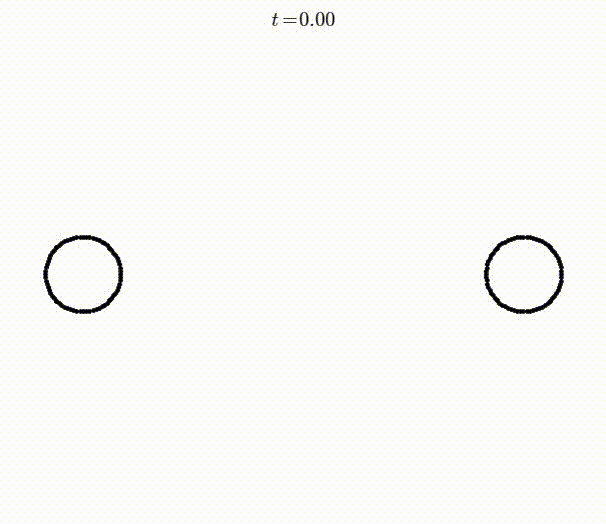
Black hole collisions in de Sitter spacetime. Two black holes of sufficiently large mass in de Sitter spacetime would, upon merger, give rise to too large a black hole to fit in its cosmological horizon, resulting in a naked singularity. We here test such a configuration. Even though the initial separation is very small, we find that the holes move away from each other, with a proper separation increasing as the simulation progresses. Further into the evolution, distorted common apparent (cosmological) horizons appear surrounding each black hole (in blue), and remain for as long as the simulation lasts. The evolution therefore indicates that the spacetime becomes, to an excellent approximation, empty de Sitter space for the observer at z=0 and that the black holes are not in causal contact.
Reference: Zilhao et al, Phys.Rev.D85:104039(2012) ; e-Print: arXiv:1204.2019 [gr-qc]



Bursts of light from axion clouds. The evolution of an axion Phi of mass mu=0.2 and of the electromagnetic scalar E^2-B^ in the background of a Kerr BH (a=0.5). The initial axion configuration describes a cloud around a spinning black hole, grown by superradiance.
Left: when superradiance is turned off and the initial amplitude of the axion is small, any vector perturbation dies off quickly.
Middle: when superradiance is turned off and the initial amplitude of the axion is large, an instability is triggered and gives rise to a EM burst.
Right: when superradiant growth is included, even a small initial axion amplitude eventually grows large and triggers EM bursts, blasts of laser-like electromagnetic radiation. This blasts lowers the axion to sub-critical values, until
superradiance dominates again.
Reference: Ikeda et al, Phys.Rev.Lett. 122 (2019) 8, 081101; e-Print: arXiv:1811.04950 [gr-qc]
